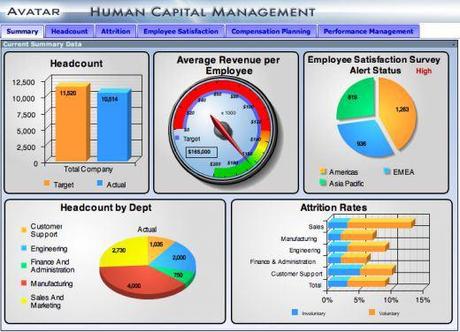
Key Performance Indicators are meant to keep an organisation on track. By measuring the performance over time, you are able to look at deviations and to take measures. As Wikipedia defines it: A key performance indicator (KPI) is a type of performance measurement. An organization may use KPIs to evaluate its success, or to evaluate the success of a particular activity in which it is engaged. Sometimes success is defined in terms of making progress toward strategic goals, but often success is simply the repeated, periodic achievement of some level of operational goal (e.g. zero defects, 10/10 customer satisfaction, etc.).
The concept behind Key Performance Indicators is to build a feedback loop between input and output. Its working principle does not differ from a thermostat, which senses the temperature of a system so that the system’s temperature is maintained near a desired set-point.

In order to get not market driven organisations more efficient the adage “The numbers tell the tale”has become fashion among governments, institutions and not-for-profit companies. There are several metrics or key performance indicators.
However, Key Performance Indicators can also lead to perverse incentives and unintended consequences as a result of employees working to the specific measurements at the expense of the actual quality or value of their work. In the social sciences, unintended consequences (sometimes unanticipated consequences or unforeseen consequences) are outcomes that are not the ones intended by a purposeful action. Perverse incentives are a type of unintended consequence. A perverse incentive is an incentive that has an unintended and undesirable result which is contrary to the interests of the incentive makers.
There are a lot of examples of bad designed Key Performance Indicators. We came across, but not exhaustive:
- Police officers get a predetermined quota of fines to give out. The unintended effect of this KPI that the police organisation will be focused on easy to obtain files, f.i. traffic fines instead of fighting serious crime;
- An organisation involved in handling objections has a KPI for the amount of rejected complaints. Imagine how employees will approach complaints. . .
- It is generally accepted that the progress of students is evaluated by tests. However, student tests assess only a small part of needed knowledge, skills and attitude of students. Also, often the purpose of the test, timely warning of learning difficulties and study delays, dilutes to “a (missed) ticket to the next hurdle”;
- An agency of child protection is responsible for placing abused or emotional neglected children in foster parents and child care institutions. It is very logic to design a KPI: like the number of placed children. If this performance is coupled to the financing of the agency, it can easily lead to placing children out of their home, against sound indications that there is no need for or against parents objections;
- It is complete reasonable to expect higher efficiency and experience of surgeons as a hospital performs at least 30 knee surgery or angioplasty a year. However, such a KPI can lead to more instead of less knee surgery and angioplasty, an example of a perverse effect contrary to what was originally intended (an intended solution makes a problem worse);
- The selling of mortgages as an end in itself, even to people who could no pay the interest, led to the bank crisis in 2008. Another example of a negative, unexpected detriment occurring in addition to the desired effect of the policy to motivate sellers to do better their best.
- To increase the efficiency of university studies universities are judged on the number of successful students per year. It is now tempting to reduce the requirements for passing exams.
- In order to increase the efficiency of General Practitioners many assurance companies allow for not more than ten minutes consults by patients. This KPI leads to far more referrals to medical specialists because GP’s have not much time to carefully investigate the medical complaints. This is an example of a counterproductive KPI: it is more of an “obstacle” than a help in the achieving of a productive project or an objective;
- Crews of warships run annual series of nautical and operational exercises. Through a complex multi-factor analysis, a KPI is derived: Operational Employ-ability. Members of Parliaments asked questions when the KPI decreased to 10%, as a warship was actually deployed in a crisis;
- Notorious are budgets: the setting of expenditure levels for each of an organization’s functions. It expresses strategic plans of business units, organizations, activities or events in measurable terms. However, such budget tends to be exhausted at the end of the year, because organizational units realize that they will be shortened in budget for next year, because last year they needed not the full budget. So, as an example, in many towns you can observe that every five to ten years the same streets and squares are completely overhauled without any need but in order to use the full budget.
Many Key Performance Indicators have unintended effects. They function as rules for behavior. Key performance Indicators are designed to notice need for adjustments of the course of an organisation. However, more often than not, they are invitations to cheat, by employees but equally by companies and institutions, especially when financial consequences are attached to the KPI.
Whenever designing or encountering a Key Performance Indication, be warned!

For more examples of perverse incentives, see here. For examples of unintended consequences see here.
To built up your Thinkibility skills, imagine your are the director of a hospice. You have set a thinking task: how to improve the occupancy (KPI) of the hospice. Then check your answers with How Dying Became A Multibillion-Dollar Industry.
